Tales of Turtles: A Look into the World of Sea and Freshwater Turtles
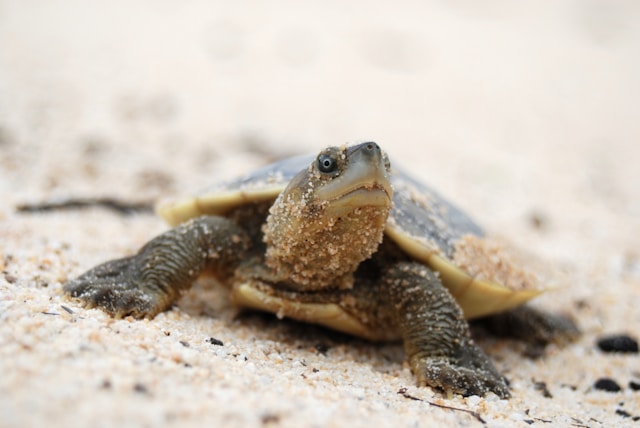
Many places in the world have sea turtles, which live in the ocean, and freshwater turtles, which live on land, often in lakes and rivers. These two types of turtles have significant morphological differences. Sea turtles have flippers instead of hands and feet. Those turtles dwelling out of the ocean have hands with fingers and […]
R.I.P. Little Mariana Fruit Bat
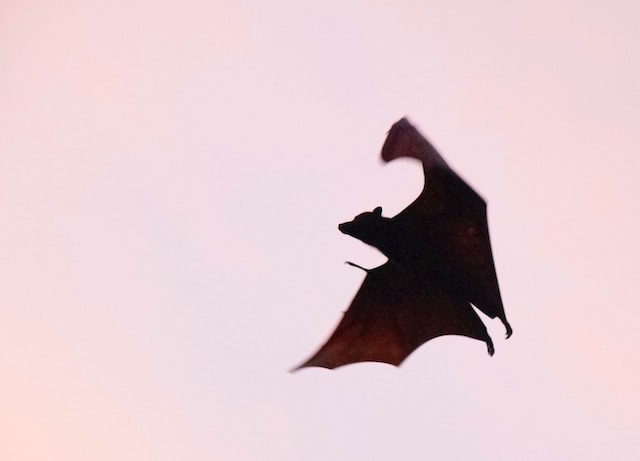
The US Fish and Wildlife Service recently announced a list of 21 species formally declared extinct. And while any species extinction is distressing, it was with great sadness that I heard the news of a particular species featured in one of my picture Books. Farewell, Little Mariana Fruit Bat The Little Mariana Fruit Bat, Pteropus […]
Celebrate Snakes!
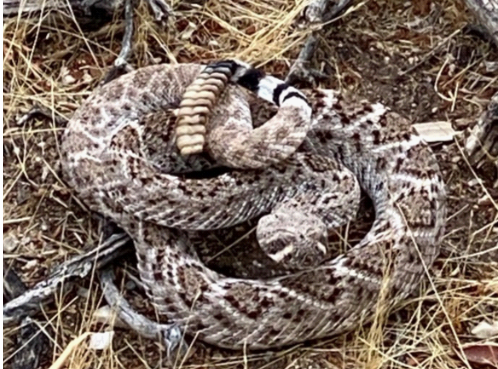
Snakes often make the list of least understood and disliked animals. But since World Snake Day is on July 16. I think it’s time we celebrate these amazing reptiles around the world! One Good Snake Living as I do in the Sonoran Desert, many people here (and in other places), feel that the only good […]
Excuse Me, is This Chair Taken?
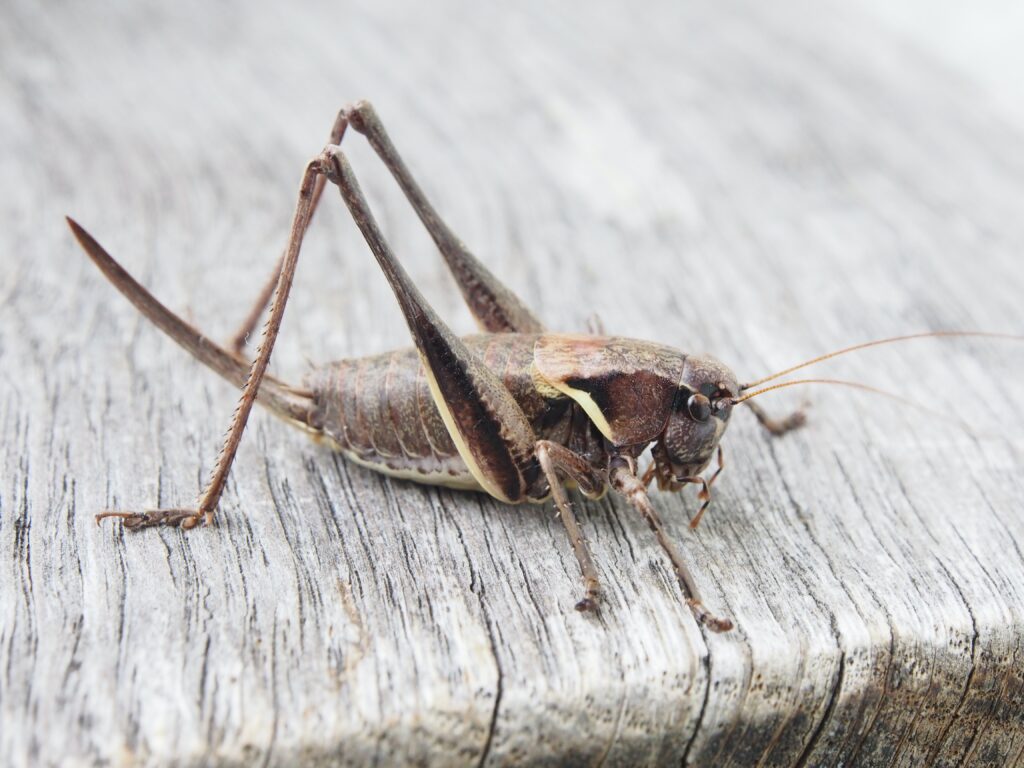
I was outside recently and went to sit down in a cushioned chair as I often do, but this morning, I found the chair occupied! You’ll never guess who took it. The surprisingly large insect, nearly 3 inches long, showed no interest in vacating the seat for me, so I thought we should get better […]
It’s Not Our Planet, It’s WePlanet
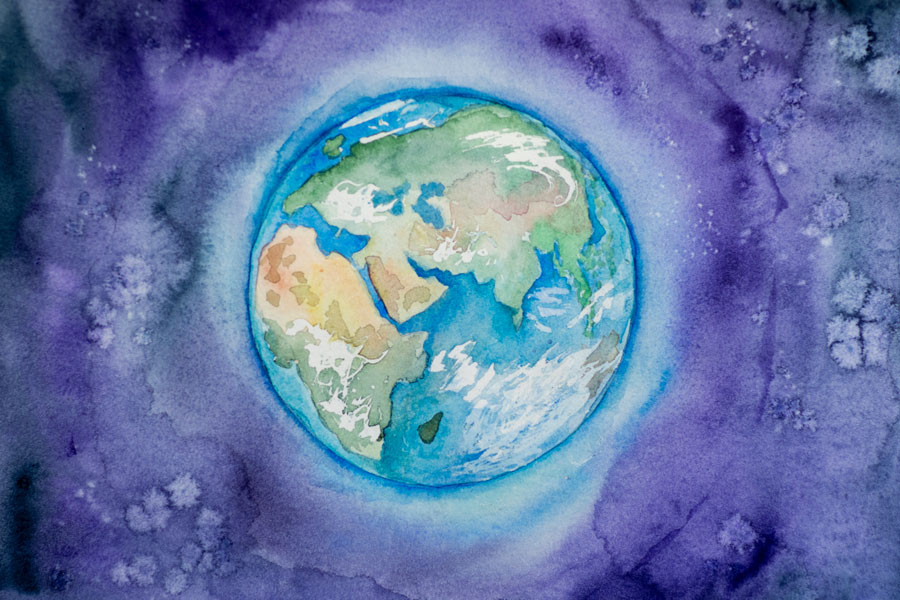
Older generations are known for disparaging the younger generation. Even Aristotle complained about youth in the 4th century BC, stating “they think they know everything and are always quite sure about it.” Perhaps we older folks are jealous of the exuberance of youth, but having “the wisdom of age” that comes from enduring life’s challenges […]
Bobbleheads and… Blue Iguanas?
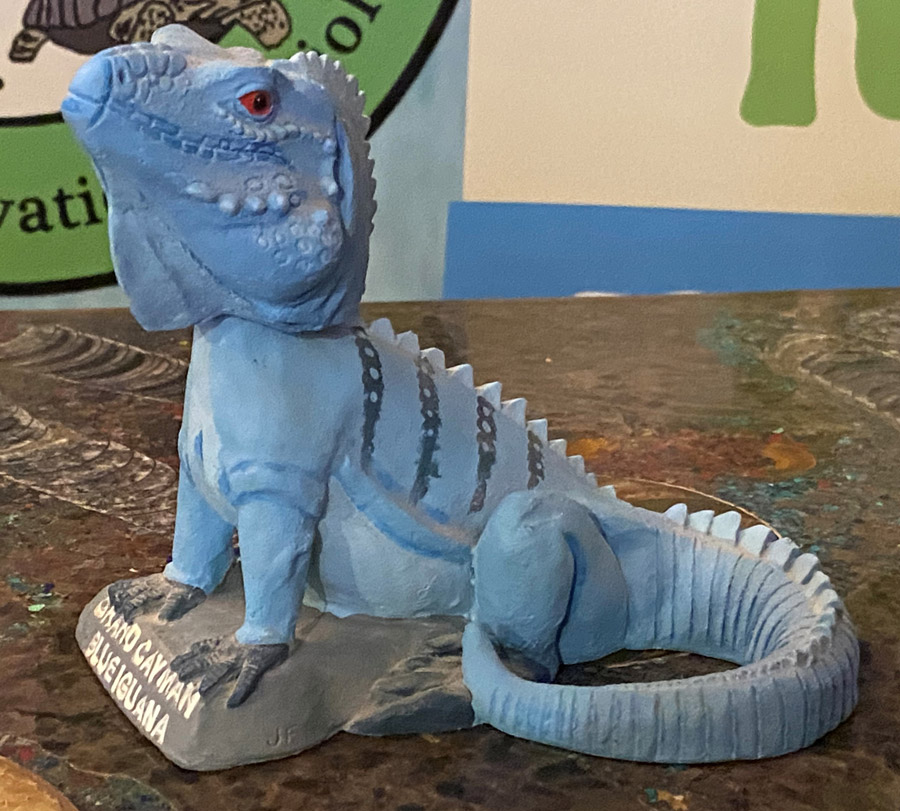
On January 7, we as a nation will celebrate the spring-connected figurines known as Bobbleheads! I don’t remember bobbleheads from my childhood, but now they seem to be everywhere. I see them most often for athletes and teams. I often wonder how significant those figurines will be in the following season. And yes, this topic […]
No Ordinary Button
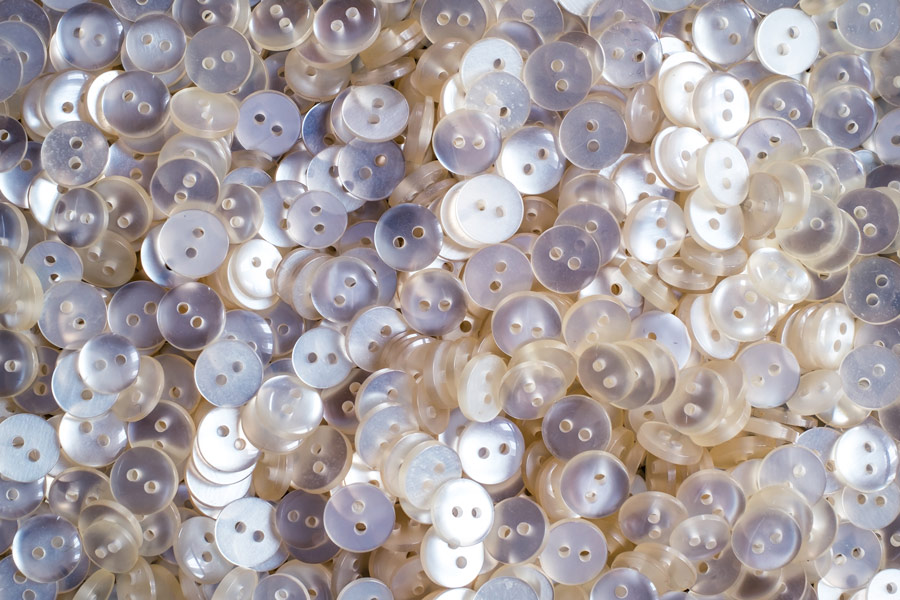
November 16th is National Button Day. What do you think of when you hear the word “button?” Do images of the many colors, diversely shaped garment fasteners come to mind? I remember selecting colors and shapes to add interest to my clothes. Then there’s the time spent searching through the massive collection that my mother […]
Jellyfish in the… Desert?
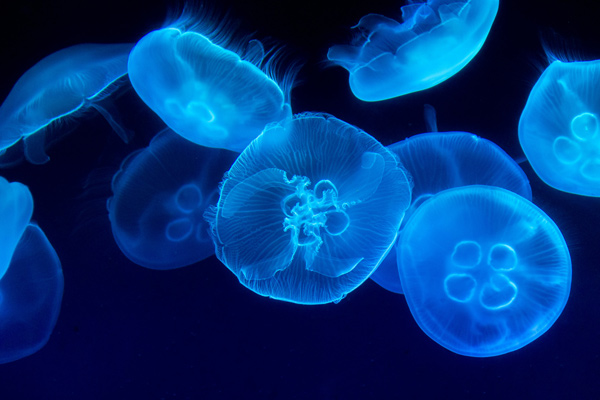
The tram operators of Sabino Canyon in Tucson, AZ are offering nighttime tours this summer. It’s part of an overall upgrade to the beautiful park located in the Santa Catalina Mountains and the Coronado National Forest. Along with upgrading to electric vehicles, the tour narration now comes with personal earbuds. This reduces the noise of […]
All About Bats: A Citizen Scientist Update
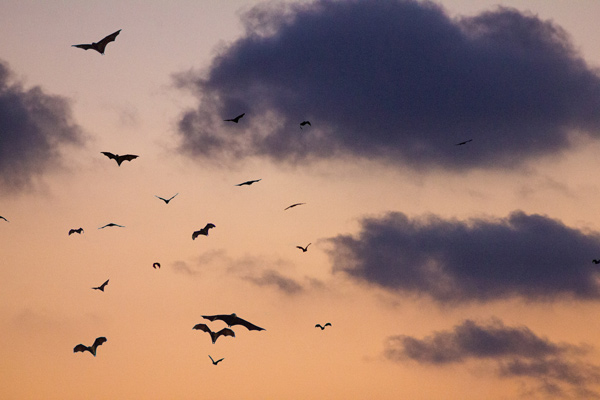
Last year, I wrote about the bat survey I’m taking part in. Researchers at Texas Christian University are studying the usage of pools by desert-dwelling bats. I live in Oro Valley, Arizona, in the Sonoran Desert. And I have a pool in my backyard. Both make me a perfect candidate for this citizen scientist endeavor. […]
What’s So Bad About Algae?
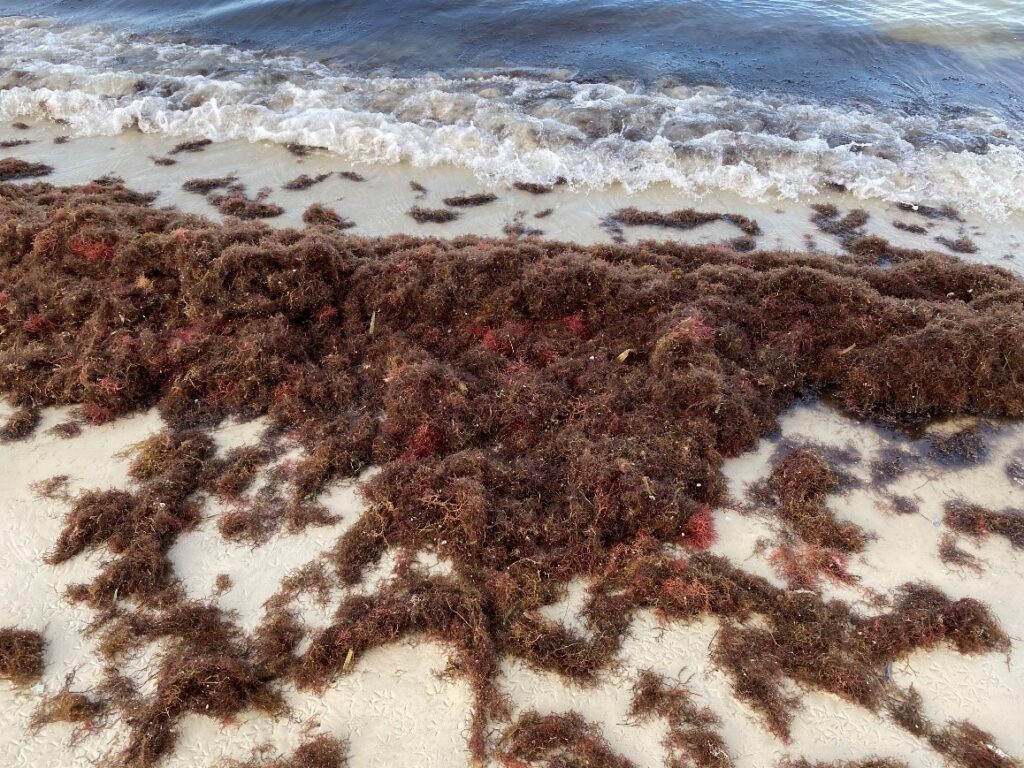
Even though I live in the Sonoran Desert, many of my book’s settings are in areas that have ocean beaches. Often in the Caribbean. These books deal with environmental issues. And with good reason. The Caribbean is one of the world’s most biologically diverse marine regions. That’s why I was concerned to learn about recent […]
Invasion of Jurassic Park
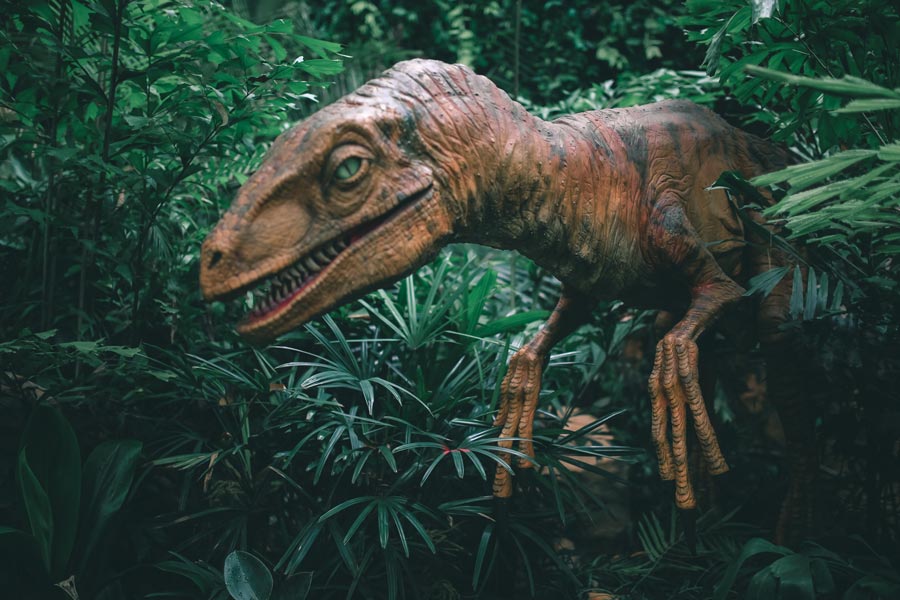
I like the Jurassic Park movie series, I mean I really like it. I enjoy watching reptiles eat well. Fresh food is important in their diet. It also helps that the dinosaur eyes and head movements are based on the real-life movements of my family members, green iguanas. The tilt of the velociraptor’s head and […]
Turtles and Tortoises Don’t Age?
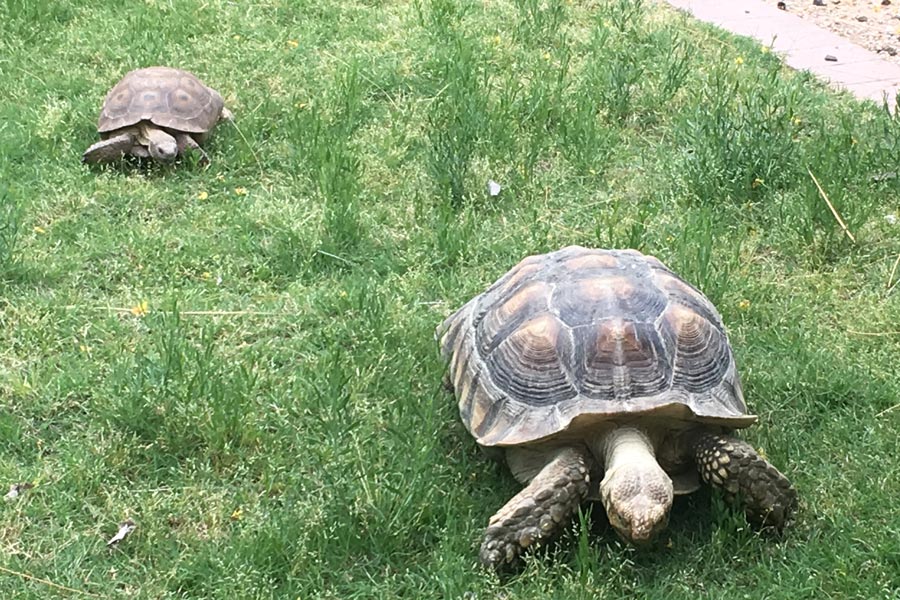
Recently, one of my iguana companions died. Ezra, a green iguana (Iguana iguana), finally succumbed to old age. A green iguana, a very common pet lizard, Ezra had lived with me for 20 years after coming to my iguana rescue in New Jersey as a full-grown adult. He must have been at least 5 years […]
Shell-a-Brate World Turtle Day!
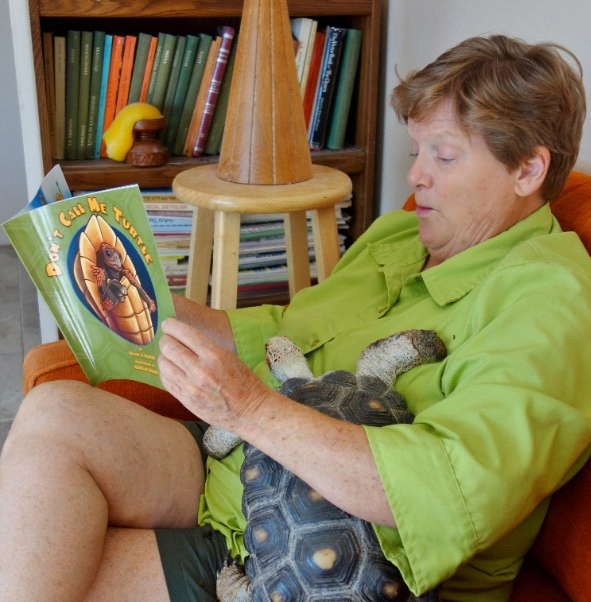
If you are familiar with my writing, you’ll have noticed that turtles are a frequent topic. But wait, you may say, I thought you usually wrote about tortoises? I hate to admit it, but tortoises fall into the category of turtles! Please don’t tell Myrtle, my red-foot tortoise. I wrote my first rhyming picture book, […]
Celebrating HerStory Month!
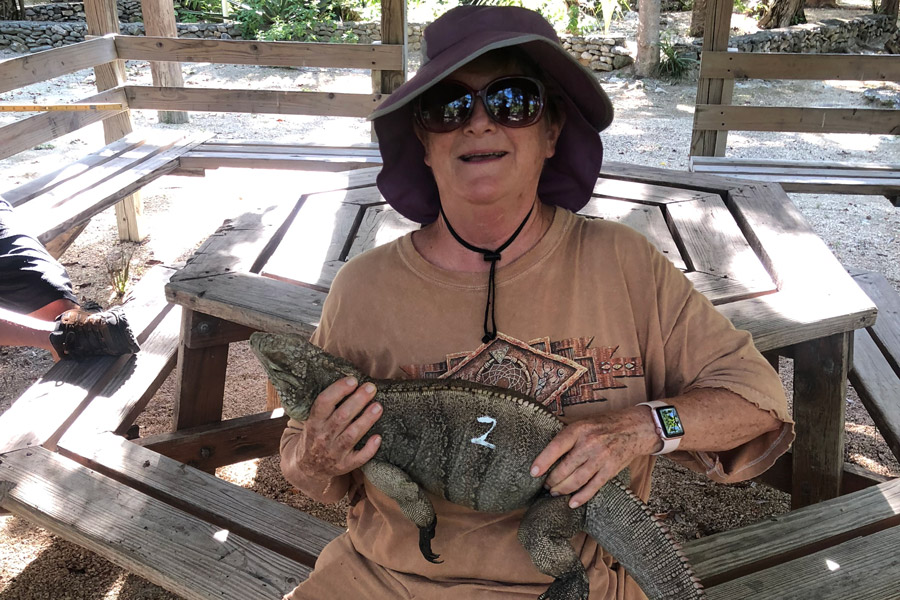
March is an important month for women! Not only was March 8th International Women’s Day. But it’s also HerStory Month, otherwise known as Women’s History Month. It is important to celebrate the vital role of women in American history for the entire month of March, not just one day. Learning about HerStory Month, got me […]
Celebrate Invasive Species Awareness Every Week!
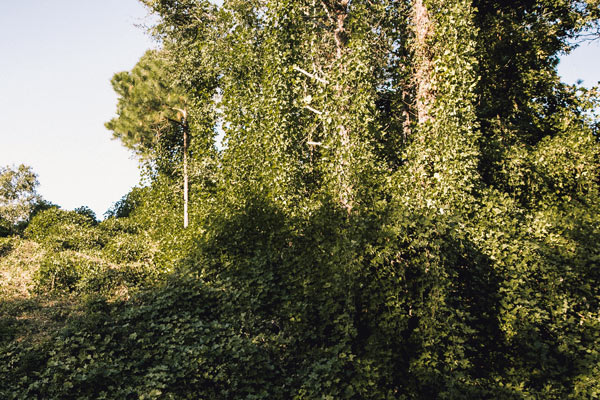
This year, National Invasive Species Awareness Week was from February 28th through March 3rd. It always begins on the last Monday of February. If you’re reading this outside of that particular week, it’s okay. The knowledge and prevention of invasive species are important enough to consider every week. Read on to learn more about why […]
The Life & Legacy of Krinkle

When I lived in New Jersey, I ran an iguana rescue and adoption program. If an iguana’s life was in danger, I would always have room for it. All of the iguanas I took in were green iguanas, Iguana iguana, but I really wanted one another type of iguana, the spiny-tail iguana, Ctenosaura similis. C. […]
Why You Should Feel Hopeful for 2022
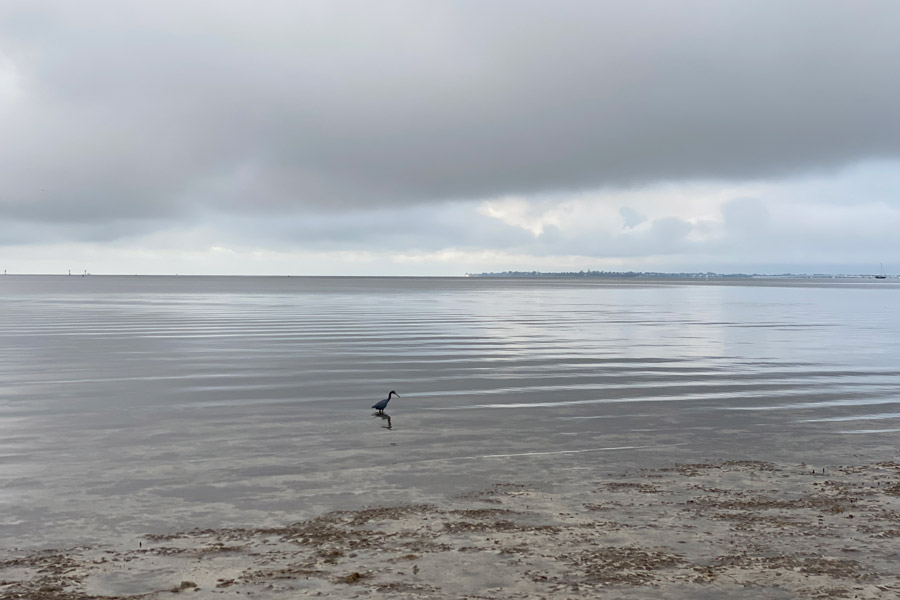
Farewell, 2021! You’ve been an interesting year. Welcome, 2022! I’m sure the coming year will be as eventful as the last, but I have hope that it will bring more good than bad. Yes, I choose to have hope for the new year. This new year starts with difficulties, such as new variants thriving, economic […]
The Need to Feed
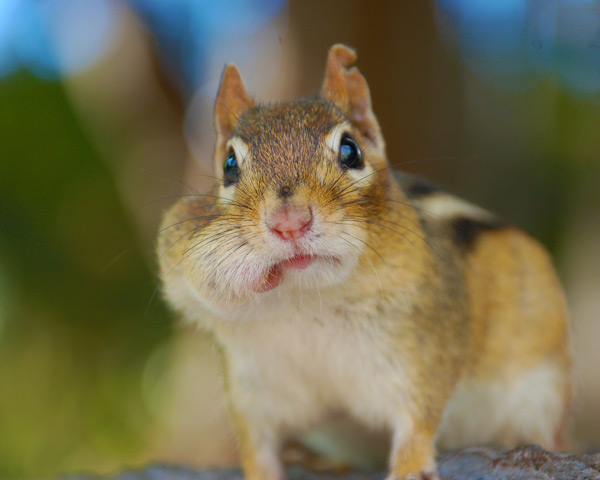
An author friend of mine recently wrote a blog for my publisher, Lyric Power Publishing. She described how she, a girl who grew up on the cement streets of Manhattan, became enamored of a couple of native Desert Spiny lizards. A local informed her that she could feed the lizards mealworms. So, every day she […]
Morton Salt, Campbells, and Flamingos in the Bahamas.

Recently, while in Chicago I happened to see the iconic Morton Salt sign. It’s so huge you can’t miss it. While it’s called a sign, in actuality it’s a roof on the old Morton Salt factory on Elston Avenue. As a child, this sign always reminded me of the Morton Salt Girl and the drawing […]
Iguanas and Tortoises are… Invasive Species?
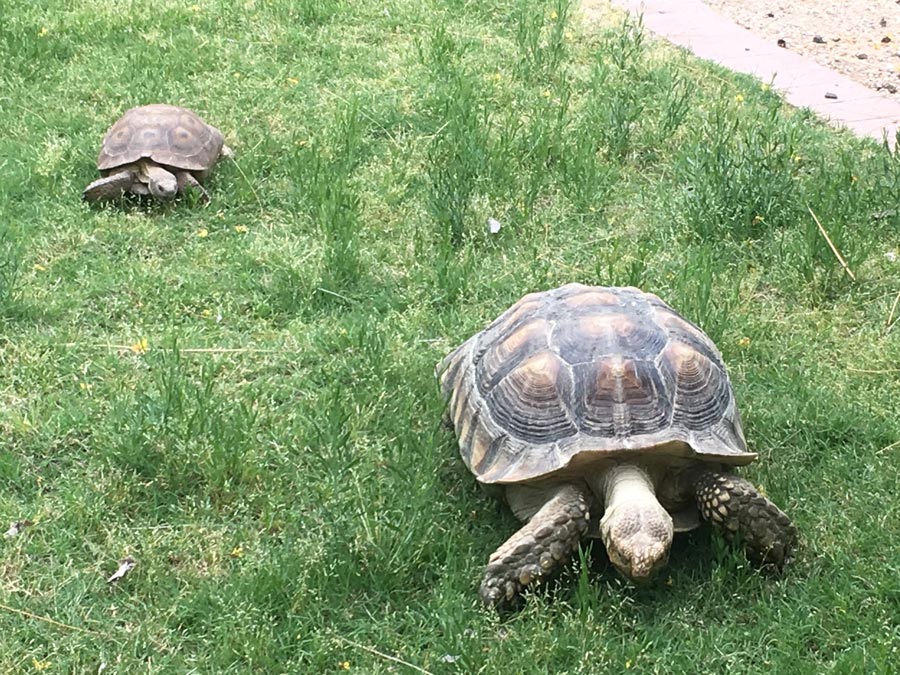
Invasive species are a common topic in environmental discussions these days, and rightfully so. Often, these concepts seem to deal with invasive plants or animals that affect people and places far away. But if you’ve ever watched my Reptile-Side chats, or witnessed one of my school or community visits, you know my non-human housemates […]
That Hurt! Where is a Bottle of Alcohol When You Need It?
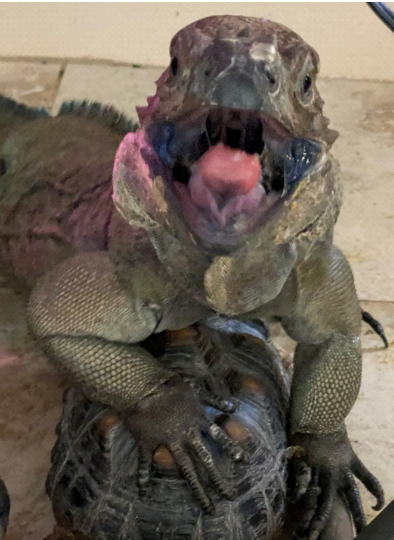
A couple of years ago I rescued a Rhinoceros Iguana, Rango, who had bitten her owner and a guest too many times. I brought her into my home and, after quarantine, allowed her to free roam — until she started biting my feet. I finally figured out it was the color socks or pants that […]
May 8th is the First International Blue Iguana Day!
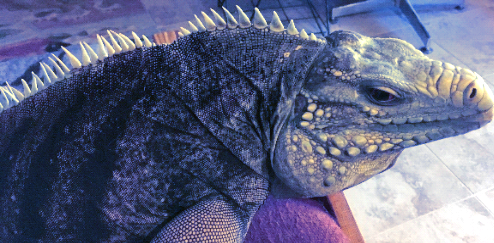
May 8, 2021 is the first International Blue Iguana Day. Blue iguanas, Cyclura lewisi, are the endemic iguanas on the island of Grand Cayman in the Cayman Islands. I had the honor of volunteering with this program, collecting native plants and preparing the salad for the iguanas. This is a story of success for a […]
Tomorrow is Earth Day!
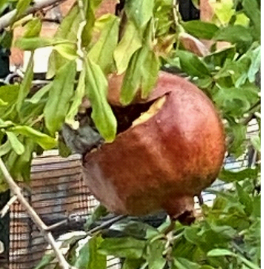
What are you doing tomorrow to celebrate Earth Day? April 22, 2021 is National Earth Day, which, as you probably know, is an annual event to support environmental protection. The goals are to educate people about protecting the world and to learn more about local and global environments. It is a day to realize that […]
I Should Have Known the Collective Noun for Iguanas!
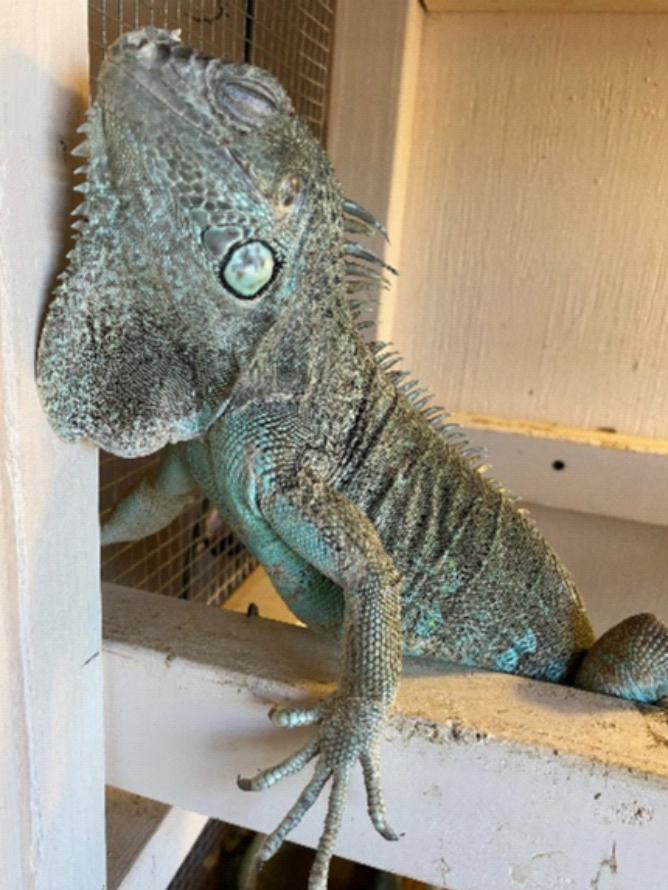
Until today, I didn’t know the collective noun for iguanas. I should have, since I’ve had more than one for around 30 years. I knew that a group of tortoises was a “creep,” and it’s a “bale” of turtles. The general term for lizards is “lounge.” I think some of my iguanas are willing to […]
My Bahamian Boas Book is Having Its Birthday Today!
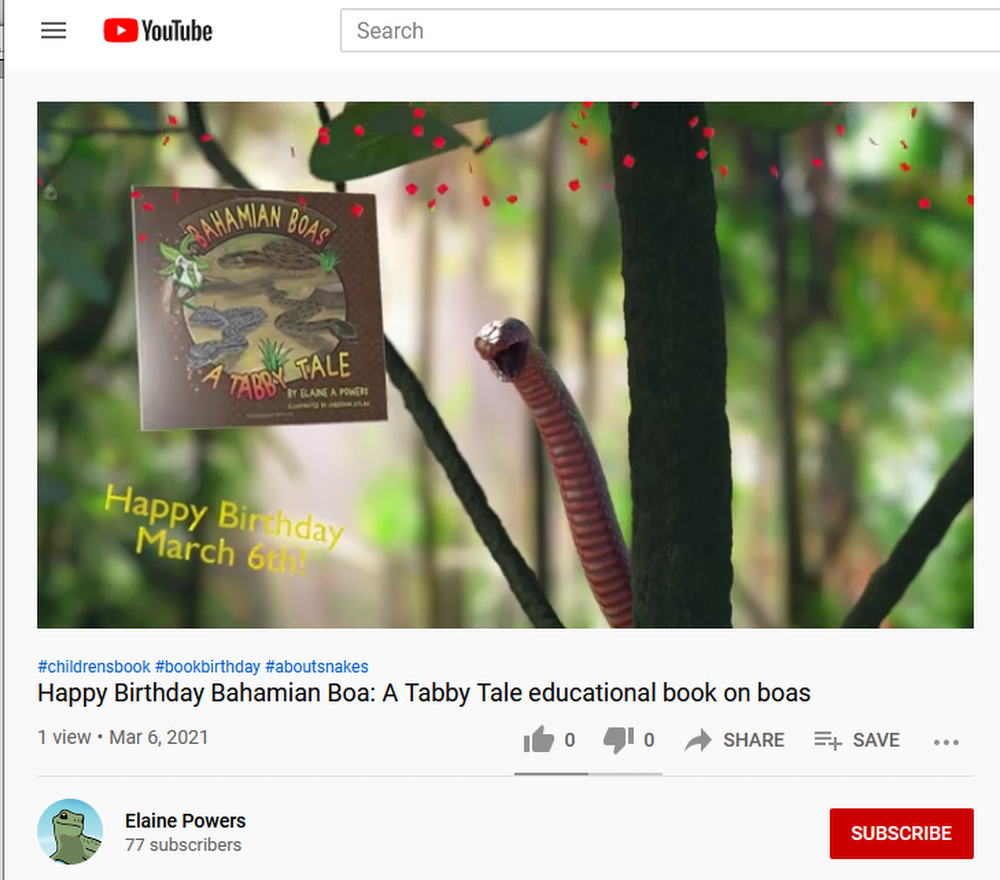
I’m celebrating the March 6th ‘birth’ day of my book, Bahamian Boas: A Tabby Tale. CLICK THIS LINK TO SEE ME SPEAK ABOUT THE BIRTHDAY OF MY BOOK. A special guest appeared, whom you will very much enjoy seeing. CLICK THIS LINK TO SEE SNAZZY THE SNAKE HIGHLIGHT THE BIRTHDAY BOOK ON YOUTUBE! HAPPY BIRTHDAY, […]
Today is National Tell a Fairy Tale Day– Meet Tabby the Five-Finger Fairy!
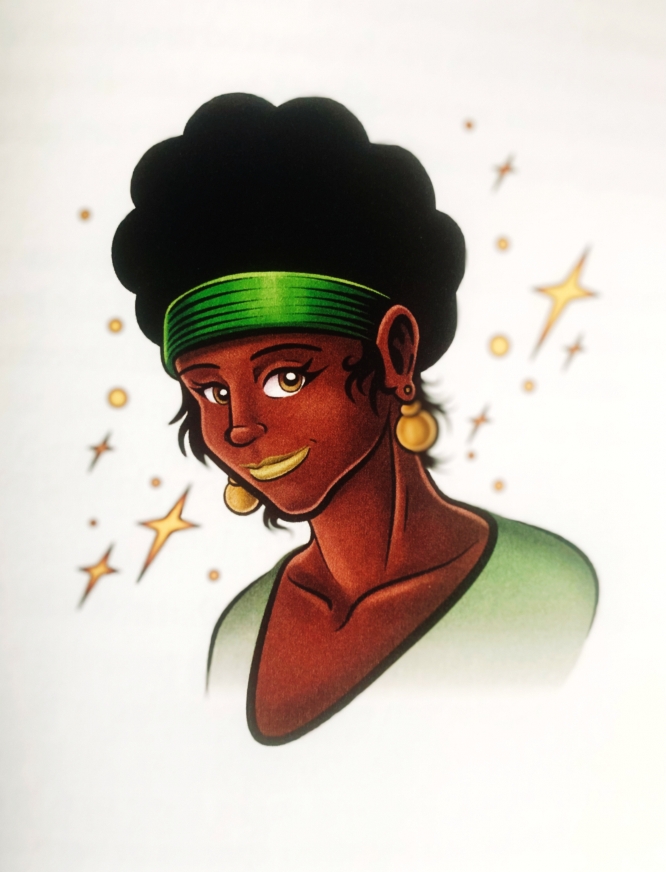
Today, February 26, is Tell a Fairy Tale Day. A fairy tale is defined as a children’s story about imaginary or magical beings and lands. Some fairy tales have been around so long they are part of folklore, passed down from storyteller to storyteller. Many of the fairy tales popular today were written in the […]
February 1st is National Serpent Day!
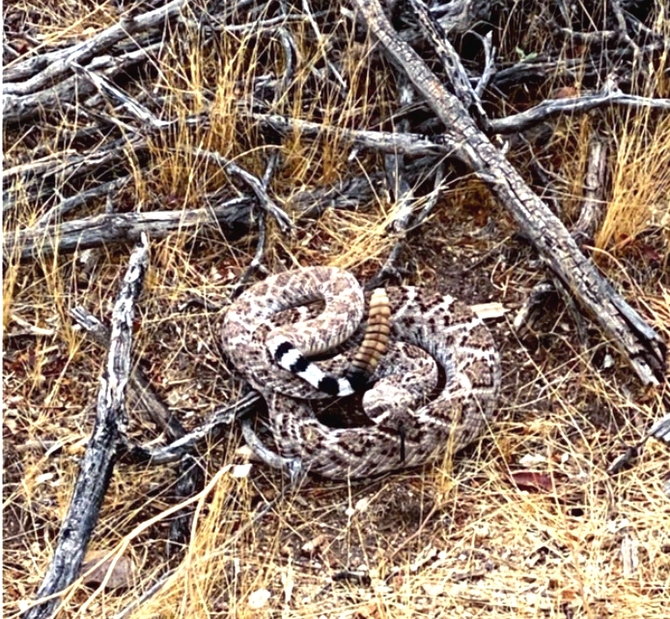
I came across this beauty, a Western Diamondback Rattler, on a recent ride in the Sonoran Desert. Ooh, February 1st is National Serpent Day! Some of my favorite animals are serpents. I grew up with snakes as family pets, mostly garter snakes, because my brother was allergic to fur. We cuddled them like you would […]
Uh, Oh! A Green Iguana Found in Sweetwater Wetlands Needs a New Home
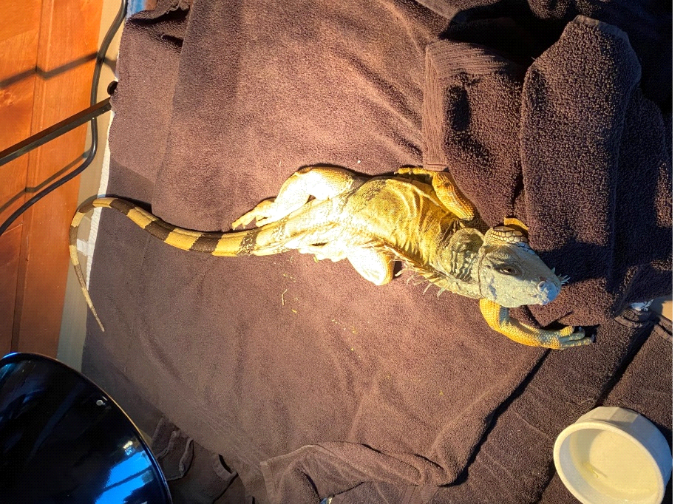
Here is Albert finishing up his recovery in foster care. By the way, he’s very adept at using his magnificent tail for defense! The Sonoran Desert is not known for its wetlands. That’s why the Sweetwater Wetlands are so special. This isn’t a natural wetlands, but was created by the City of Tucson’s reclaimed water […]
Interested in Becoming a Citizen-Scientist?

Recently, I posted on my social media about a citizen-scientist opportunity that you could do from the comfort of your home. This project was through Zooniverse. For an iguana study, people were needed to look at photos and count the iguanas they could see. The scientists took the photos and cut them into little pieces. […]
Humans Have Always Moved Animals–Let’s Do So for the Right Reasons
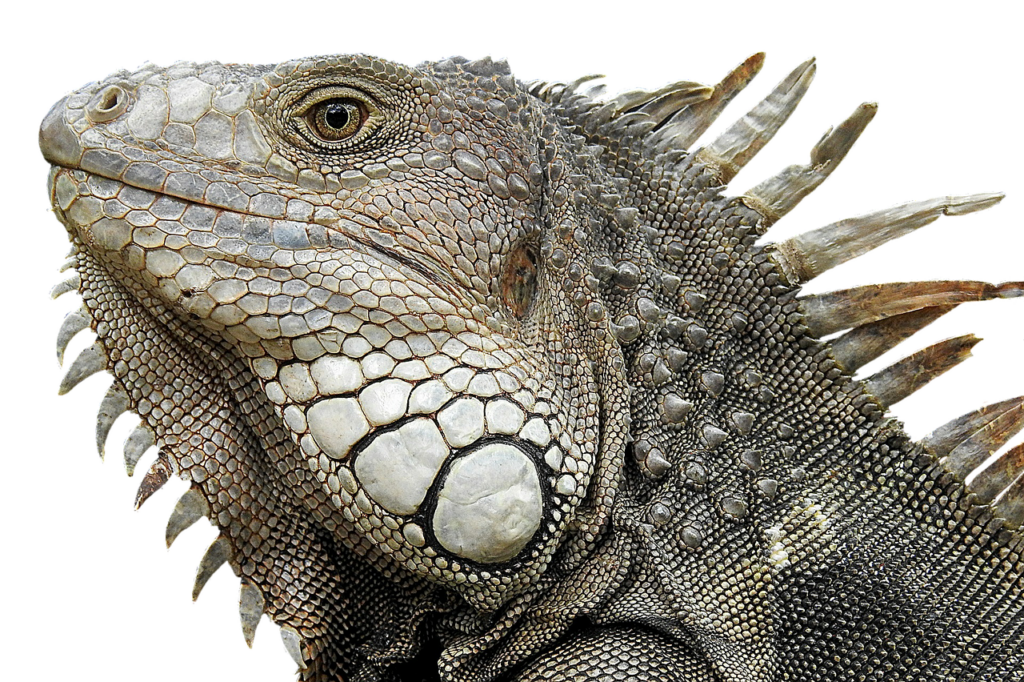
At a recent conservation meeting in the Caribbean regarding iguanas, there was discussion about establishing additional colonies on islands, so that the lizards would be protected from human-caused threats. The selected islands included their historical homes and new, safe places. Of course, moving animals is nothing new. Mankind has been moving and introducing animals to […]